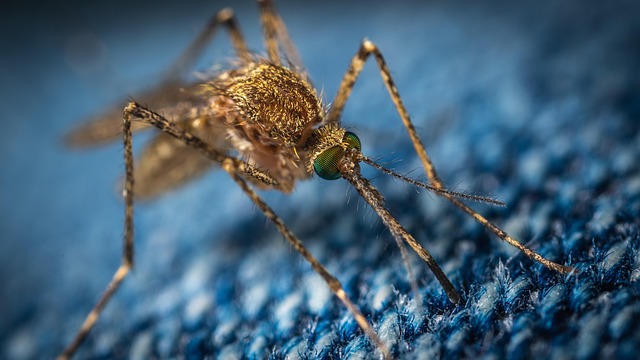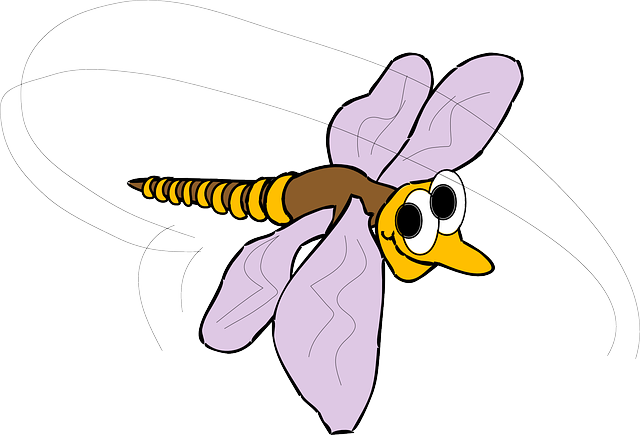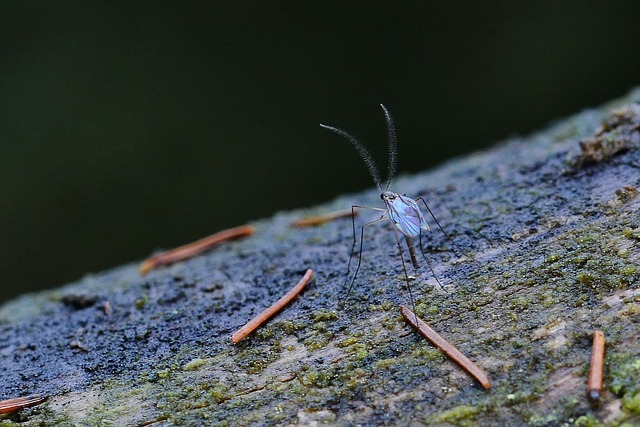Mosquitoes transmit deadly diseases like malaria, dengue fever, Zika, and West Nile virus, posing a global health threat, especially to vulnerable populations. Effective mosquito control involves eliminating breeding grounds (stagnant water sources), using natural or chemical treatments, personal protective measures, environmental approaches, and innovative technologies. Strategic management of water bodies, promoting natural predators, and data-driven insights contribute to creating habitats less favorable for mosquitoes, ultimately reducing the risk of mosquito-borne diseases worldwide.
Mosquitoes are more than just a nuisance; they pose significant health risks by transmitting various diseases. Understanding mosquito-borne illnesses and their impact is crucial for implementing effective mosquito control measures. This article explores comprehensive solutions, from identifying common breeding grounds and natural vs chemical control methods to personal protection and large-scale environmental strategies. We also delve into innovative technologies revolutionizing mosquito management, providing a multi-faceted approach to tackling this global challenge.
Understanding Mosquito-Borne Diseases and Their Impact

Mosquitoes are more than just a nuisance; they carry and transmit various diseases that can have severe impacts on human health. Understanding these mosquito-borne illnesses is a crucial step in implementing effective mosquito control measures. Diseases such as malaria, dengue fever, Zika virus, and West Nile virus are spread through the bite of infected mosquitoes, posing significant risks to communities worldwide.
These pathogens can lead to devastating consequences, including high fevers, severe headaches, joint pain, and in some cases, life-threatening complications. Pregnant women, children, and individuals with weakened immune systems are particularly vulnerable. By recognizing the potential health hazards associated with mosquito bites, people can take proactive steps towards mosquito control, thus reducing the risk of these debilitating diseases.
Common Mosquito Breeding Grounds and How to Eliminate Them

Mosquitoes breed in stagnant water, so identifying and eliminating potential breeding grounds is a key aspect of mosquito control. Common areas where mosquitoes thrive include water-filled flower pots, bird baths, buckets, old tires, clogged gutters, and even small puddles that remain for several days. To minimize these habitats, it’s essential to empty and clean containers regularly, ensure proper drainage, and maintain gutters free from debris.
Removing standing water not only reduces mosquito breeding but also prevents the spread of diseases. Additionally, using mosquito traps or applying insecticides in affected areas can further enhance mosquito control efforts. Regular maintenance and awareness of these breeding grounds are vital steps to creating an environment less welcoming to mosquitoes.
Chemical vs Natural Mosquito Control Methods

When it comes to mosquito control, there are primarily two approaches: chemical and natural methods. Chemical treatments have been a traditional go-to for many years, involving the use of synthetic pesticides to eliminate mosquitoes. These chemicals can be effective in reducing mosquito populations but may also pose potential risks to human health and the environment. They can leave harmful residues and impact non-target organisms, including beneficial insects.
Natural mosquito control methods offer an alternative that is growing in popularity due to its eco-friendly nature. This includes strategies such as removing standing water (mosquito breeding grounds), using plant-based repellents, introducing natural predators like fish or birds, and employing biological controls. These natural solutions not only minimize environmental impact but also provide a safer approach to mosquito management, ensuring a healthier and more sustainable environment.
Personal Protective Measures Against Mosquito Bites

Protecting yourself from mosquito bites is an essential part of mosquito control. This can be achieved through a combination of personal protective measures (PPMs). One effective method is applying insect repellent containing DEET, picaridin, or oil of lemon eucalyptus to exposed skin. These repellents create a barrier that discourages mosquitoes from landing and feeding. Wearing long-sleeved clothing and pants, especially during dawn and dusk when mosquitoes are most active, can also significantly reduce bite incidents. Additionally, closing windows and doors with screens or using air conditioning helps keep mosquitoes out of homes and public spaces.
For those spending time outdoors, physical barriers like mosquito nets and protective gear designed for outdoor activities are valuable tools in mosquito control. Regularly removing standing water from containers around the home is another crucial preventive measure, as mosquitoes breed in stagnant water. This simple action can significantly reduce local mosquito populations by eliminating their breeding grounds. Moreover, using fans while outside can deter mosquitoes, as they struggle to fly against air currents. These PPMs, when used together, provide a robust defense against mosquito bites and contribute to overall mosquito control efforts.
Environmental Strategies for Mosquito Prevention on a Larger Scale

On a larger scale, effective mosquito prevention and control strategies involve environmental approaches that create an inhospitable habitat for these insects. One key method is the strategic management of water bodies since mosquitoes breed in stagnant water. Regularly emptying containers such as buckets, gutters, and old tires can significantly reduce breeding sites. Additionally, implementing proper drainage systems and maintaining water quality in urban areas helps minimize mosquito-friendly environments.
Community-wide efforts to enhance natural predators like birds and fish can also be impactful. Planting native vegetation that attracts these natural controls and creating habitats for them can contribute to a balanced ecosystem where mosquitoes are kept in check. Moreover, using environmentally friendly larvicides and adulticides only when necessary, coupled with public education on mosquito prevention measures, ensures a sustainable and holistic approach to mosquito control.
Innovative Technologies in Mosquito Management

Mosquito prevention has seen a surge in innovative technologies aimed at effective mosquito control. One such breakthrough is the use of smart sensors and monitoring systems that can detect mosquito activity in real-time, providing data-driven insights to target high-risk areas more precisely. These advanced tools allow for more efficient deployment of resources and treatment strategies.
Additionally, genetic engineering and biotechnology offer promising solutions. Researchers are developing genetic modifications to control mosquito populations by targeting specific life stages or altering their behavior. For instance, sterile insect techniques release male mosquitoes that compete with wild ones for mates, effectively reducing the breeding population. Such technologies present environmentally friendly alternatives to traditional chemical sprays, contributing to safer and more sustainable mosquito control practices.
